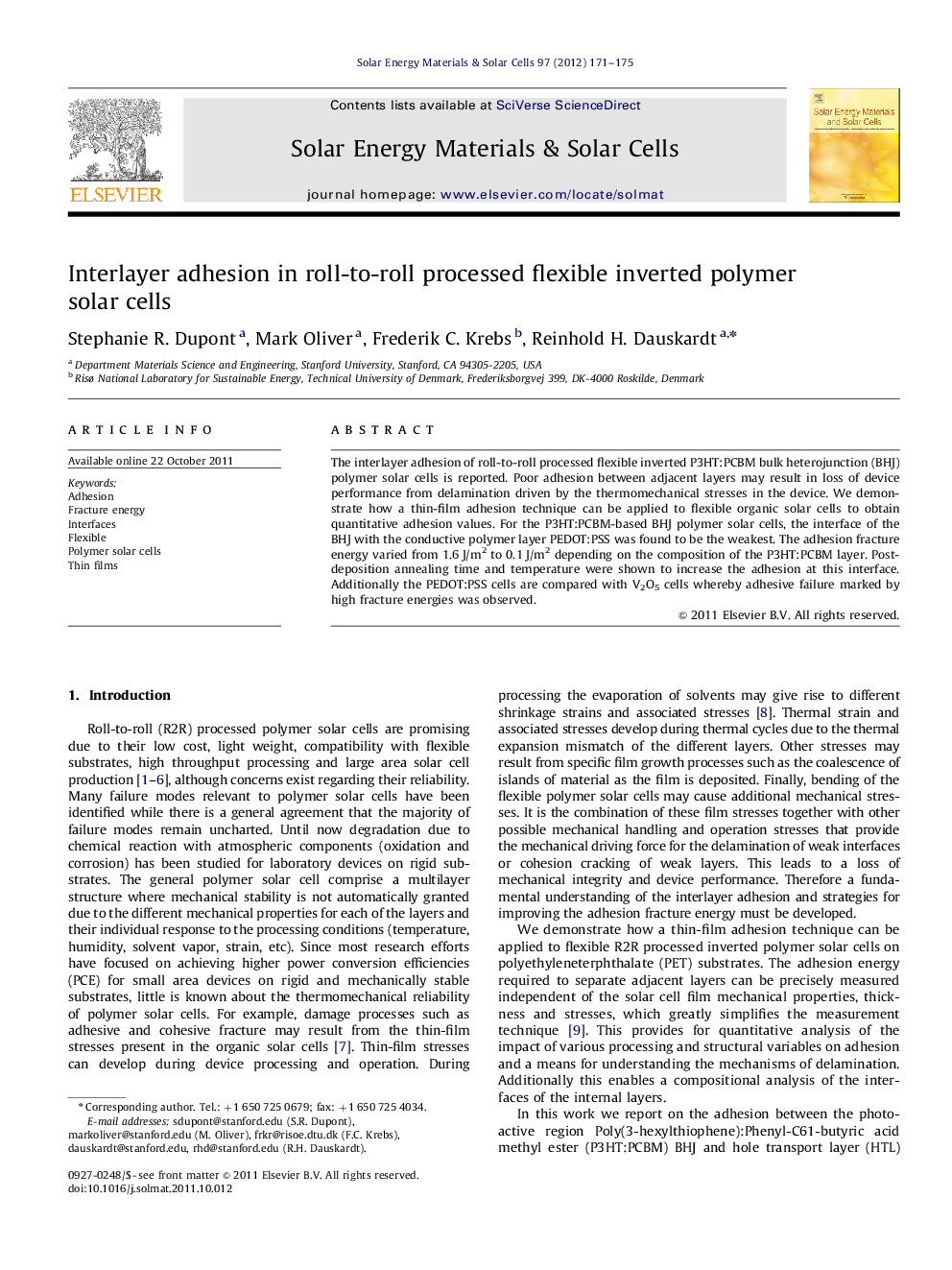| Article ID | Journal | Published Year | Pages | File Type |
|---|---|---|---|---|
| 78662 | Solar Energy Materials and Solar Cells | 2012 | 5 Pages |
The interlayer adhesion of roll-to-roll processed flexible inverted P3HT:PCBM bulk heterojunction (BHJ) polymer solar cells is reported. Poor adhesion between adjacent layers may result in loss of device performance from delamination driven by the thermomechanical stresses in the device. We demonstrate how a thin-film adhesion technique can be applied to flexible organic solar cells to obtain quantitative adhesion values. For the P3HT:PCBM-based BHJ polymer solar cells, the interface of the BHJ with the conductive polymer layer PEDOT:PSS was found to be the weakest. The adhesion fracture energy varied from 1.6 J/m2 to 0.1 J/m2 depending on the composition of the P3HT:PCBM layer. Post-deposition annealing time and temperature were shown to increase the adhesion at this interface. Additionally the PEDOT:PSS cells are compared with V2O5 cells whereby adhesive failure marked by high fracture energies was observed.
Graphical AbstractFigure optionsDownload full-size imageDownload as PowerPoint slideHighlights► Interlayer adhesion of roll-to-roll processed flexible inverted multilayer polymer solar cells was studied. ► Donor–acceptor ratio critically influences the adhesive strength at the interface of the active layer and adjacent polymer layer PEDOT:PSS. ► Fullerene rich layers lead to very poor adhesion. ► Thermal annealing time and temperature were found to improve adhesion strength due to the diffusion of PCBM away from the interface. ► Replacement of PEDOT:PSS as the hole transport layer with hydrated vanadium oxide led to an increase in fracture energy by 2 orders of magnitude.
